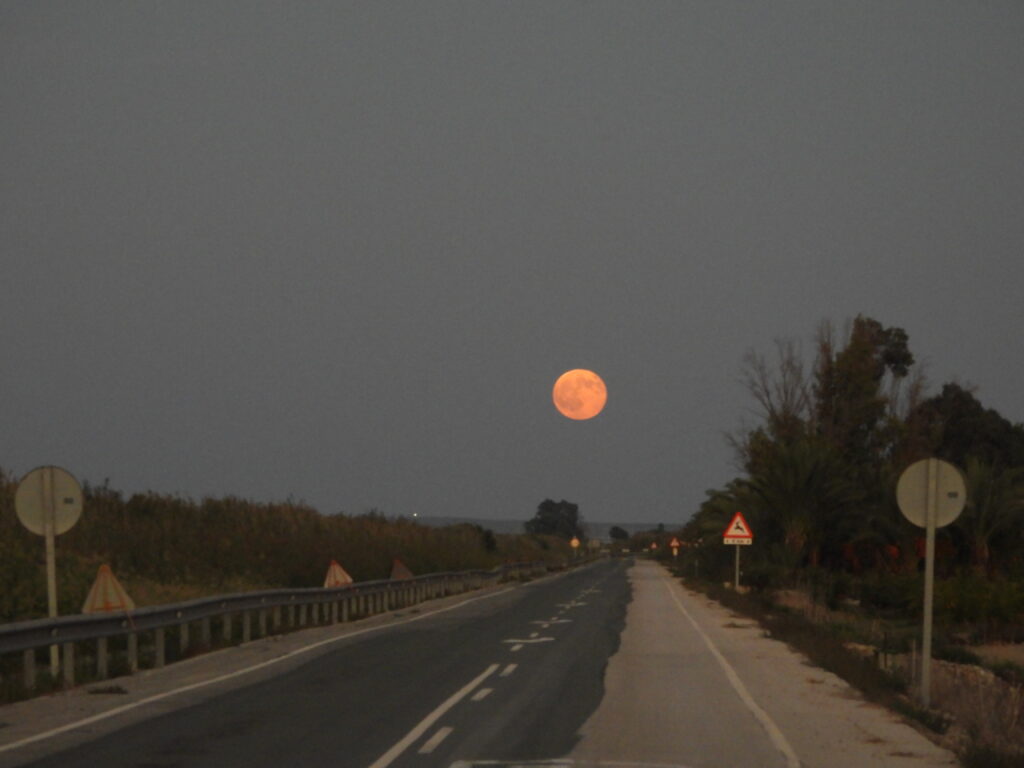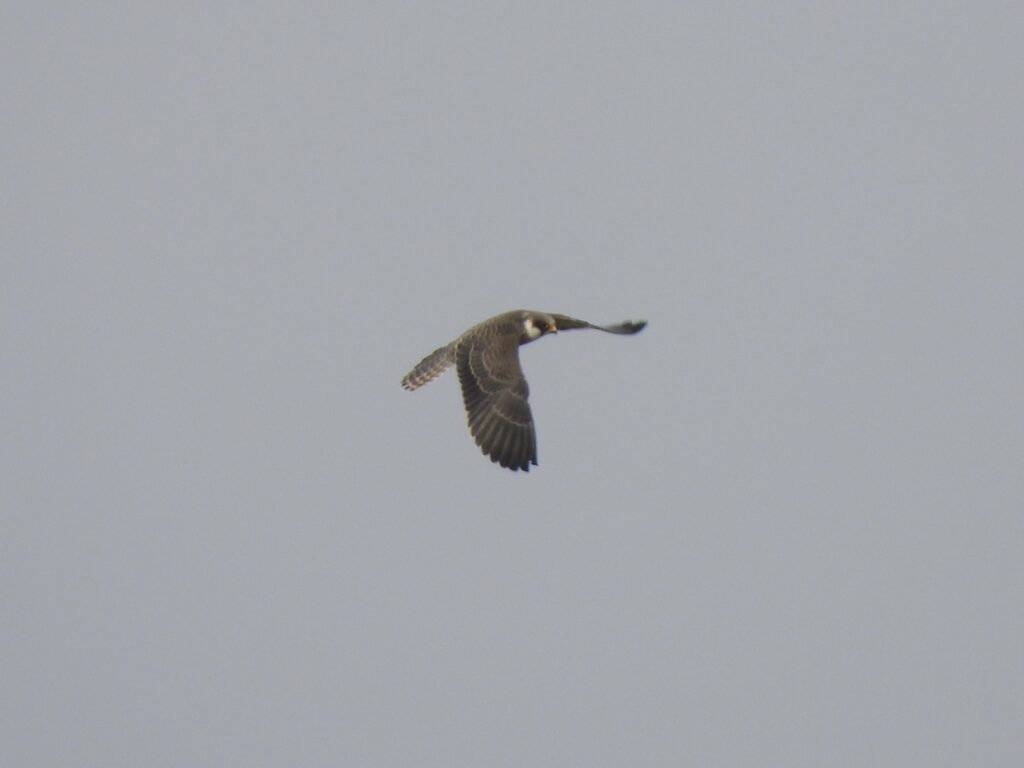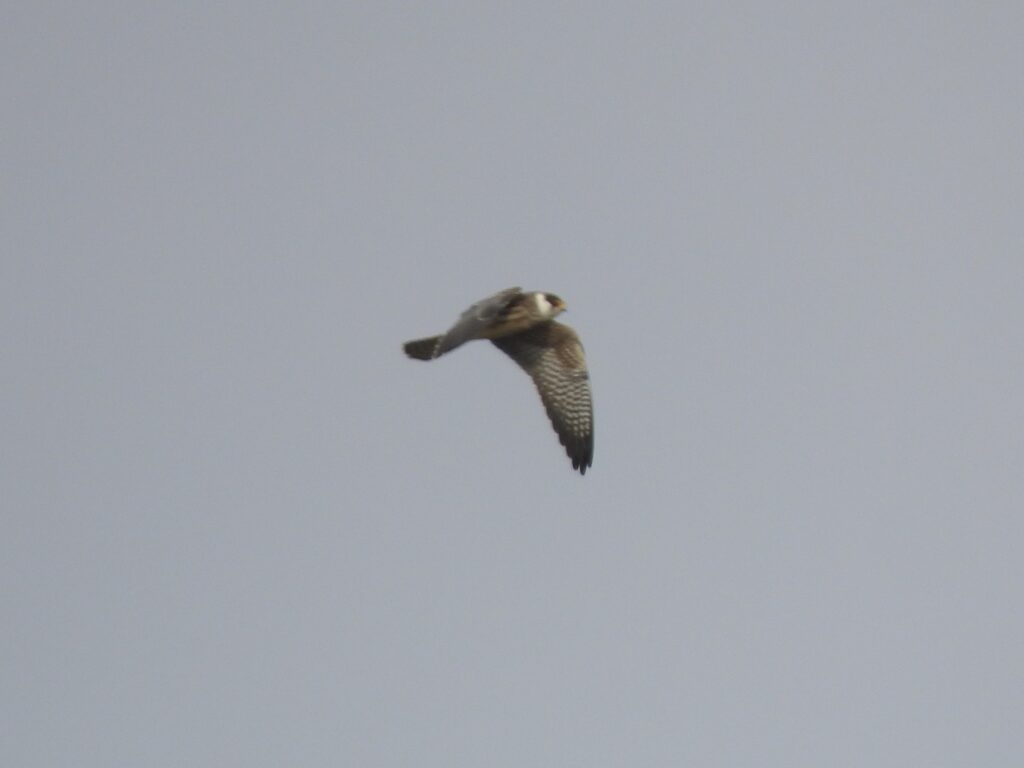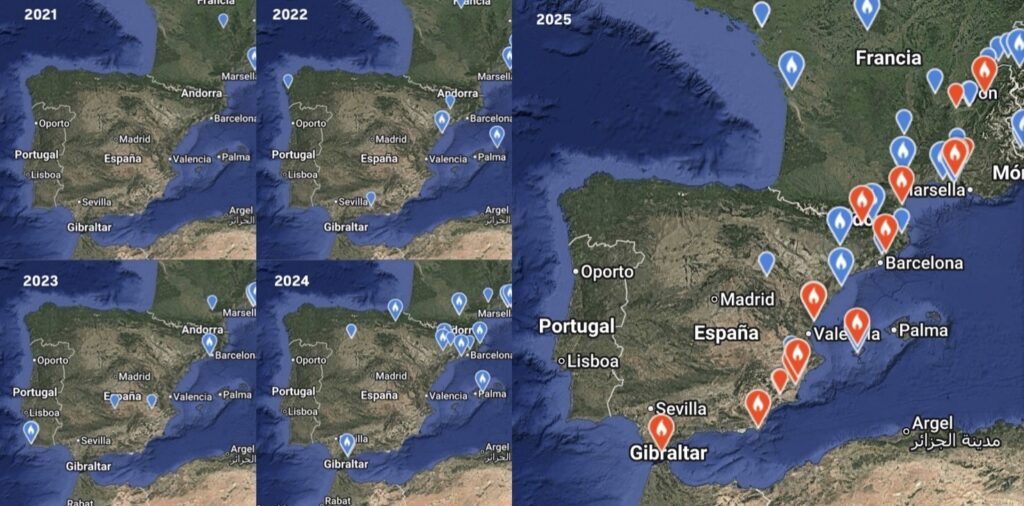Connecting with long-distance migrants on passage is an exciting part of birdwatching. While only capturing a small fraction of a tremendously long trip, one is left wondering about the starting and end points of such a route. Every now and then, and for a variety of reasons, these trips shift toward alternative paths. All of a sudden, a typically rare species can pass through an area in good numbers. This fall, it was the turn of a raptor.

The red-footed falcon (Falco vespertinus) is a small falcon of open landscapes. Adult males have sooty plumage with their namesake reddish “boots,” while females are orangish, white and dark gray. The species breeds from Eastern Europe to the northern steppes of Central Asia and migrates through the eastern Mediterranean flyway to wintering grounds in southern Africa. In the western Mediterranean, it is a very scarce but regular migrant, mostly in spring — a season in which the species has been recorded annually in the Valencian Community in recent years.

However, while looking for migrating hobbies (Falco subbuteo) in El Hondo Natural Park on 8th October with Jorge Verdú, Darío Gijón and Tati Pessano, a juvenile red-footed falcon crossed the trail flanking the reedbed south of the reserve, flying with some kestrels (Falco tinnunculus). A lifer for all of us — which we only confirmed later, once we double-checked the testimonial photos. As a side note, later that same day we connected with a passing-by tree pipit (Anthus trivialis), another very welcome but more regular migrant, while ringing barn swallows (Hirundo rustica).

Apparently, an unusually large influx of juvenile red-footed falcons took over the western Mediterranean migration flyway, breaking regional records for postnuptial migration. The first was recorded by Mark Simmonds on 29th September in Las Moratillas, Villena. Then came our bird in El Hondo on 8th October, and Marcos Real subsequently found birds in active migration near El Hondo on the 11th and 14th, plus another in Sierra Escalona on the 15th. Beyond Alicante, up to three birds settled in Marjal d’Almenara, Castellón, between the 10th and 17th. More individuals were also recorded in Murcia, Andalusia, Catalonia, Ibiza, and France.

Food availability, demographics, meteorology, or a combination of these factors could explain this influx. Interestingly, numbers of red-footed falcon have been particularly low in this autumn’s Batumi Raptor Count — which monitors the species’ typical route — perhaps suggesting that migration timing for juveniles coincided with conditions that blocked that corridor. Be that as it may, it was a treat to connect with this smart falcon in El Hondo.




